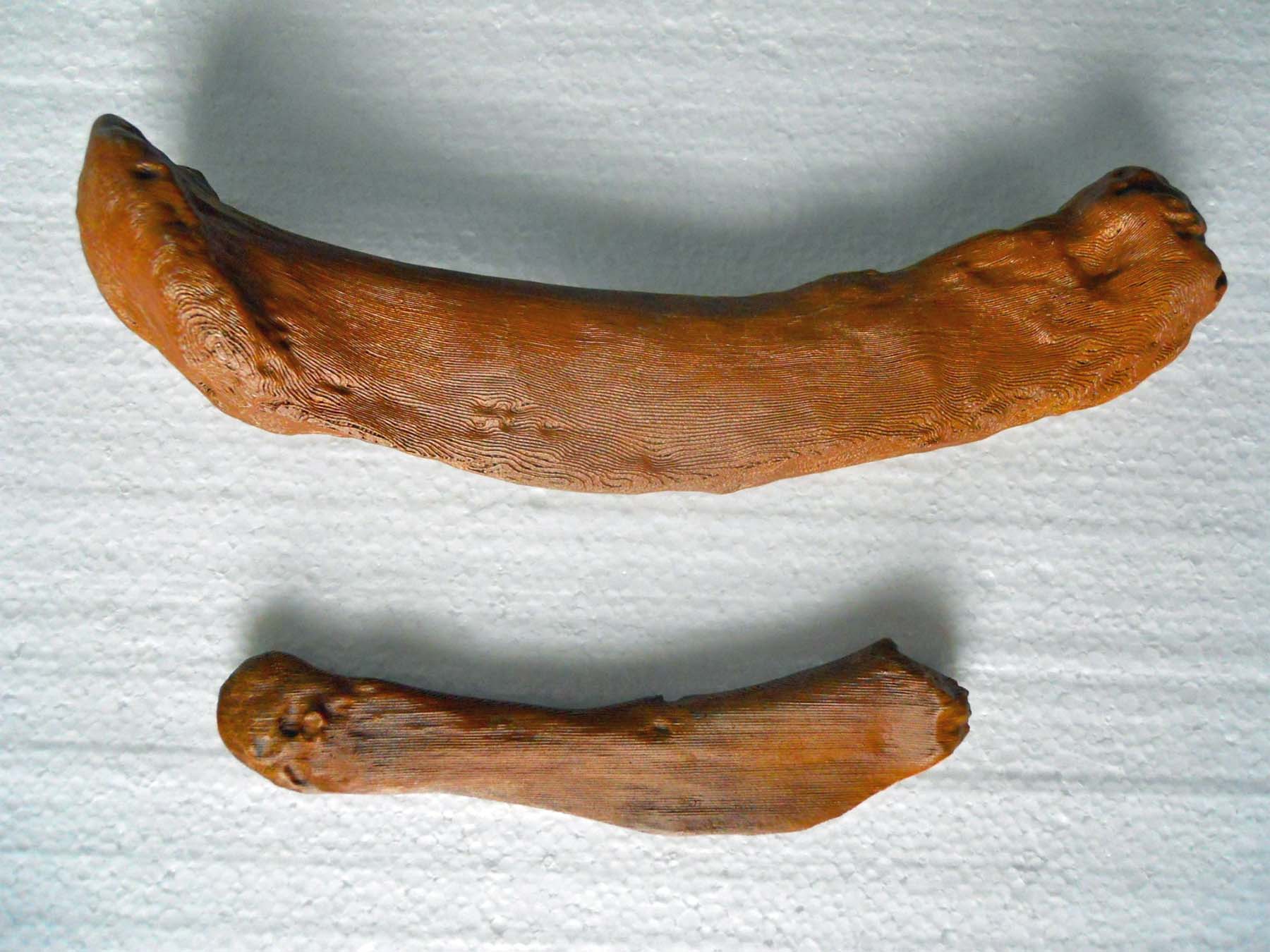Introduction to Walk Like a Sloth: lessons in ground sloth locomotion
 Getting Oriented
Getting Oriented
The clavicle or collar bone connects the scapula or shoulder blade to the sternum or breast bone. Along with the scapula and proximal end of the humerus (upper arm bone) the clavicle makes up the sloth’s so-called shoulder girdle and plays an essential role in helping control the sloth’s arm movements. The larger rounder end of the clavicle connects to the manubrium of the sternum while the smaller thinner end connects to the acromion of the scapula. Both ends are rough and pitted, not smooth as on other joints, serving to better anchor important ligaments within the shoulder girdle. These are synovial joints–in life you would find a cartilage pad between the bones and a layer of fluid to lubricate and cushion the shocks these joints must absorb.
Like your clavicle, the sloth’s collar bone is curved slightly to wrap around the front of the chest (bow side out) and attach to the scapula. Your clavicle bends forward slightly again, making an “S” shape, Megalonyx’s doesn’t, but there is great variability in shape among humans as well as sloths. (Aiello and Dean, 1990) With the medial or “in” side versus the lateral or “out” side determined, we just need to identify the top or superior side from the inferior side or “bottom.” Look for the cone-shaped conoid tubercle about 1/3 of the way from the thinner (acromial) end. That goes “down.” It anchors a ligament that attaches the clavicle to the coracoid process of the scapula. Note the anterior expansion of the clavicle at the lateral end. That’s extra surface area for attaching part of the deltoid muscle.

